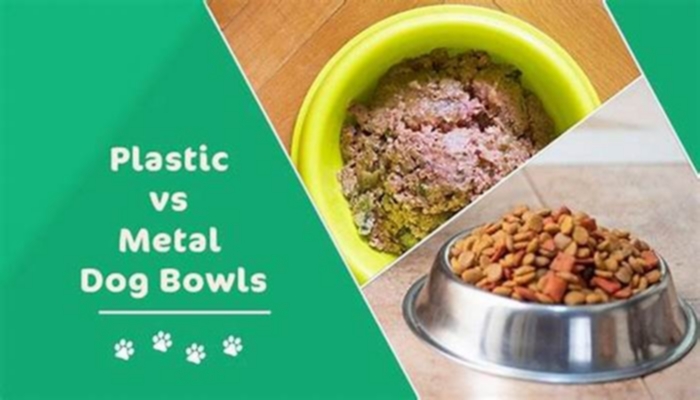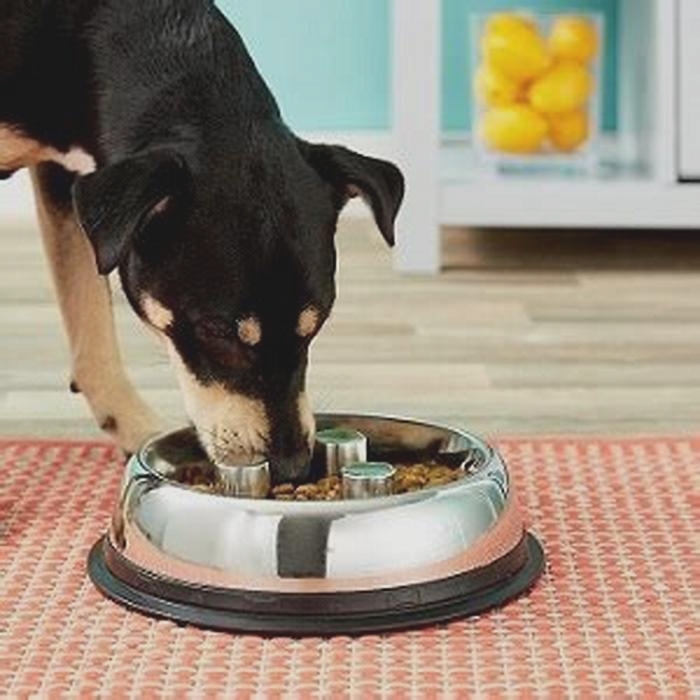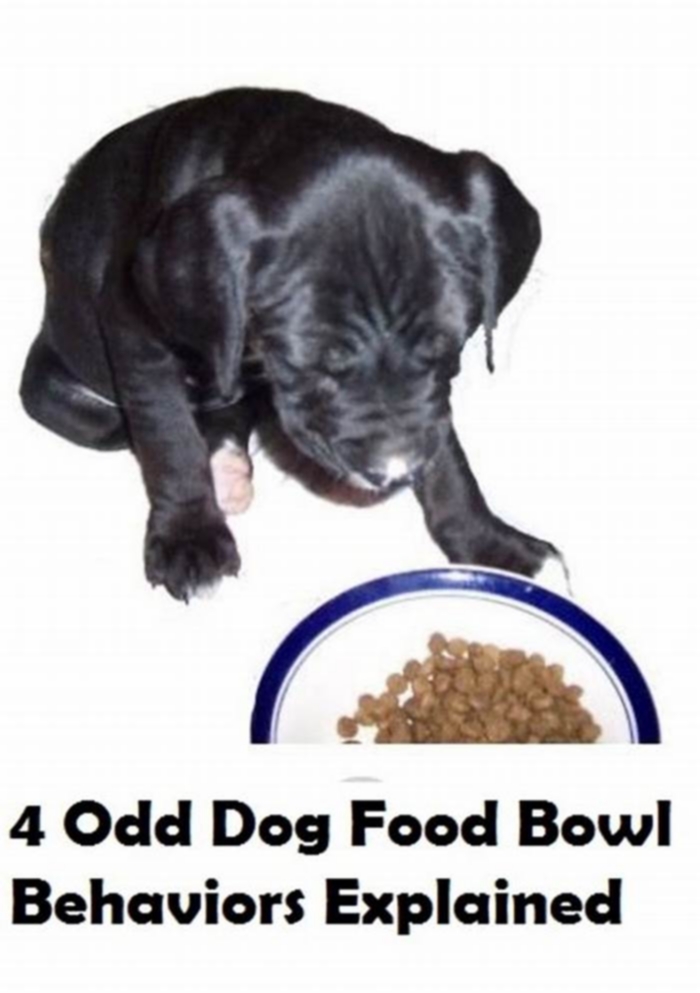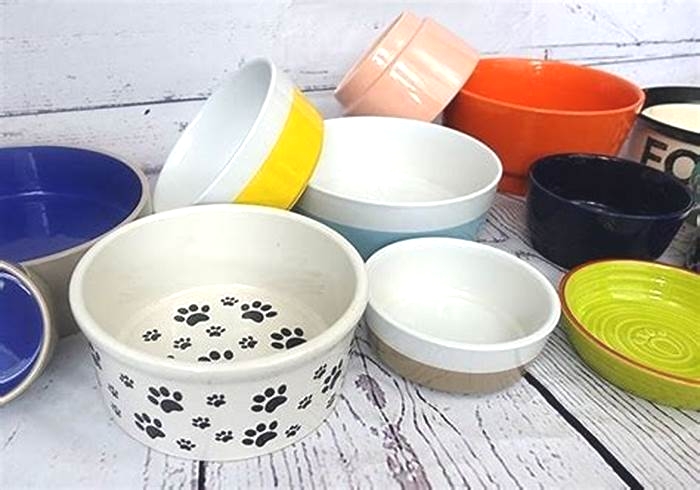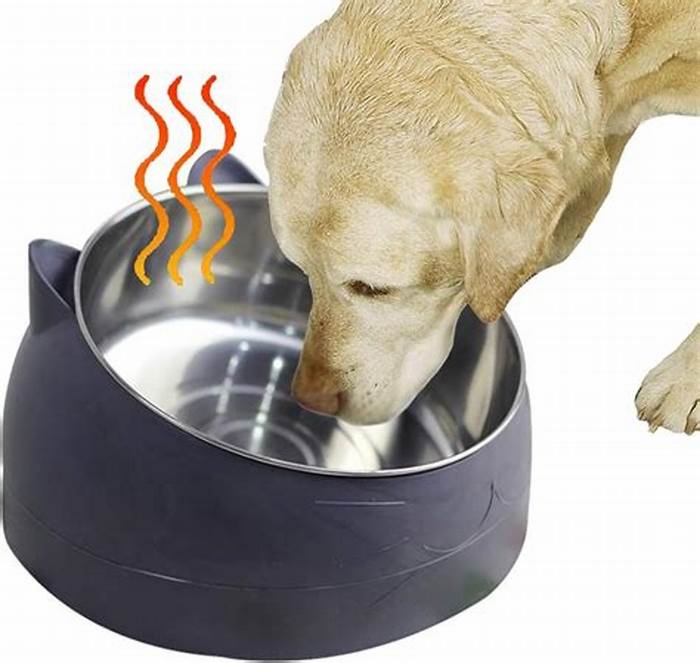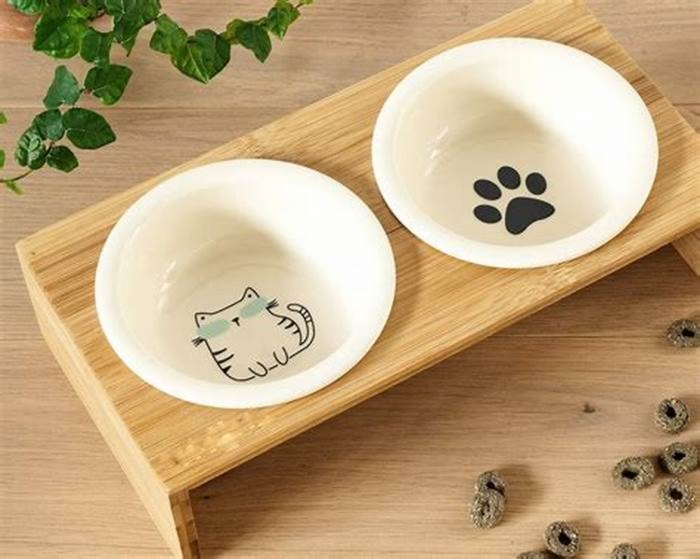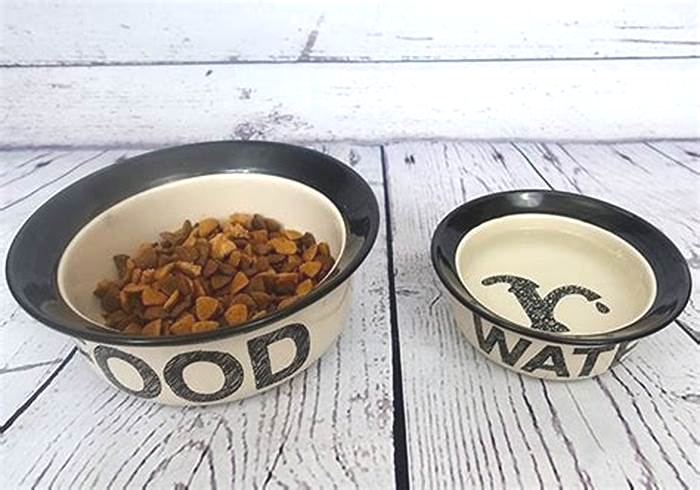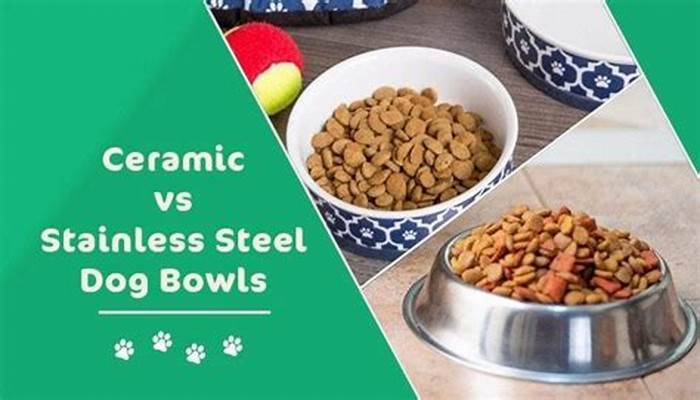Are metal or ceramic bowls better for dogs
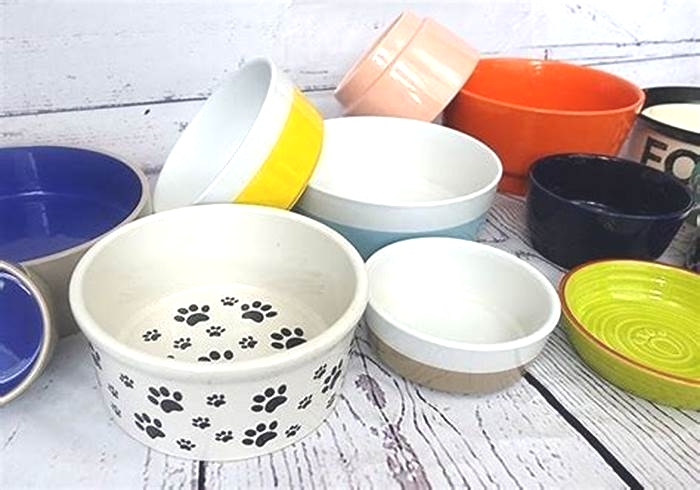
Ceramic Dog Bowls vs. Stainless Steel Dog Bowls: Which to Choose?
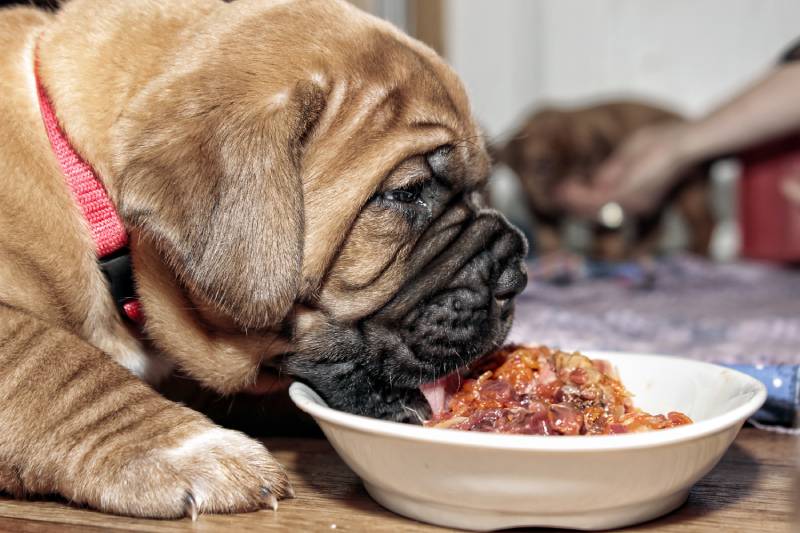
Dog bowls come in a wide variety of materials, all of which have their advantages and disadvantages. Most commonly, they come in plastic, glass, ceramic, and stainless-steel forms. Unless you have a young puppy, plastic bowls should be avoided, as dogs will chew these up in a matter of minutes and potentially ingest bits of plastic, which can cause a host of health problems, both dental and digestive. Glass can break easily due to an enthusiastic pooch and should be kept for older, calmer dogs.
That leaves two optionsceramic dog bowls and stainless steel dog bowls, as the most common and well-tested choices. But which is the right option for your dog? We put both these options to the test to find out which material really reigns supreme.
Ceramic Dog Bowls
Ceramic dog bowls are widely available, come in a wide variety of sizes and styles, and are often beautifully designed and aesthetically pleasing. These bowls are usually glazed on the outside, making them easy to clean and dishwasher safe. Ceramic bowls are heavy, so are less likely to be scraped along the floor while your dog is feeding, and your pooch will likely be unable to carry them away to the far reaches of your house or yard.
Before buying a ceramic dog bowl, make sure that it is labeled as food safe or lead-free, as some of the glazes used to seal these bowls can contain lead and other potentially harmful ingredients. Ceramic bowls can easily chip or break when dropped, and these small cracks and chips can collect harmful bacteria, even after thoroughly washing them. These cracks can also create sharp edges and shards, which could hurt your pooch while feeding.
Ceramic bowls are also comparatively expensive, especially the bowls with complicated patterns and designs.
- Widely available
- Come in a wide variety of colors and styles
- Customizable
- Dishwasher safe
- Heat-resistant
- Wont move while feeding
- Can chip and break easily
- Cracks and chips can harbor harmful bacteria
- May end up with sharp edges
- Expensive
Stainless-Steel Dog Bowls
Stainless steelis the go-to choice for dog bowls. They are by far the most durable and widely available and are easy to clean and dishwasher safe. They also will not rust, wont easily scratch or dent, and are resistant to high temperatures. Stainless-steel dog bowls will survive a fall off a countertop and are lightweight too. They are also affordable, as being so widely used drives prices down. Because stainless steel does not scratch or crack easily, it is the most hygienic option, as bacteria cannot easily survive on the surface. Thorough cleaning will remove any potentially harmful bacteria quickly and easily.
Make sure you buy a stainless-steel bowl with a non-slip rim to prevent the bowl from sliding across the floor while feeding, causing spillage! Also, be sure to buy food-grade stainless-steel bowls that are specifically made for pets. Some stainless steel bowls may contain lead or other metal toxins. While stainless-steel bowls arent that much to look at and dont come in the variety of colors and designs that ceramic bowls do, they are durable and long-lasting and have stood the test of time among dog owners.
- Durable
- Wont crack or scratch easily
- Resistant to high temperatures
- Lightweight
- Easy to clean
- Hygienic
- May slide around without a non-slip rim
- Do not come in a variety of colors or designs
Other Considerations
While the construction material is arguably the most important factor to take into consideration, the style of bowl that you purchase is important too. Dogs with long muzzles and ears will appreciate a deeper bowl, while dogs with flat faces like Pugs will do well with shallow bowls. Large dogs like Great Danes will benefit from raised or elevated bowls. These consist of a raised platform with a bowl embedded inside, and they are believed to help prevent gastrointestinal issues and are more comfortable for these giant breeds.
If you have a dog that tends to gobble up food in seconds, you may consider purchasing a slow-feed bowl. These bowls contain raised ridges inside the bowl to force your dog to take smaller bites of food at a time and thus eat slower.
Conclusion
In conclusion, stainless-steel dog bowls offer the best durability, are the most hygienic, and are the most cost-effective option for a bowl for your dog. They are also lightweight and wont rust, and even the biggest dog is unlikely to break a stainless-steel bowl.
That being said if you own a small, calm, or older dog, a ceramic dog bowl still has benefits, as well as pleasing aesthetics. Lapdogs are unlikely to break these bowls, and they are perfectly fine if kept clean.
Featured Image Credit: Jan Dix, Shutterstock
Stainless Steel vs Ceramic Dog Bowls: Which Is Right for Your Needs?
A good dog bowl is an essential purchase when you own a pet. Size and shape can vary, but each pet will need a place to eat. However, some materials like plastic can leak harmful chemicals into the food and scratch easily, allowing bacteria to form and grow. Some metals can rust, which will ruin the bowl and add iron oxide to the food. Stainless steel and ceramic are also popular materials often used to make dog bowls, and we are going to look at each to see which one is better. Keep reading to make sure you get the best food bowl for your pet.

Overview of Stainless Steel Dog Bowls
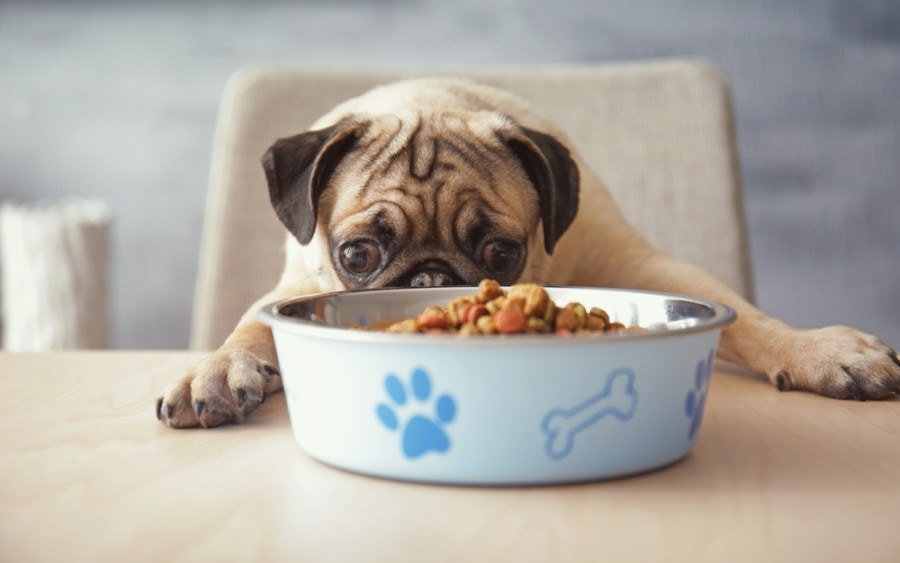
What is stainless steel?
Stainless steel is an iron alloy made by mixing iron with carbon, nitrogen, aluminum, silicon, nickel, and more to give it a wide variety of properties. It must contain at least 11% chromium to be stainless steel, and this ingredient prevents it from rusting and also allows it to be more heat resistant. Adding more chromium or nickel will increase its rust resistance. Since the stainless steel does not rust or scratch easily, it makes an excellent dog bowl.
The only real downside to stainless steel is that it doesnt hold paint well, so its usually not very fancy unless its in a larger base plastic base.
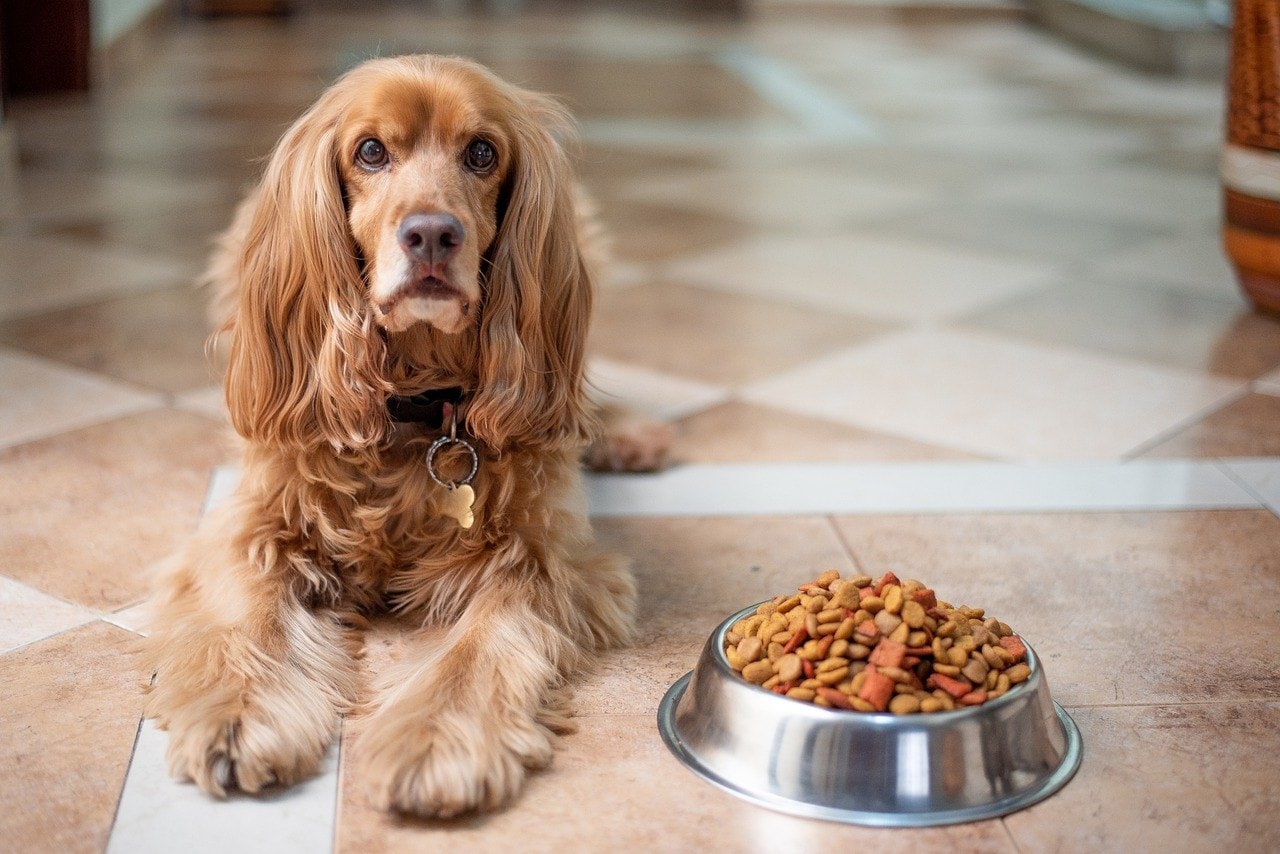
When do I use stainless steel?
Stainless steel makes a great choice as a dog bowl, and there are very few downsides. As we mentioned, it does not rust, so its suitable for indoor and outdoor pets. It wont add any chemicals to the water or change the flavor, and it wont scratch, so bacteria cant grow on the surface. Its also nearly indestructible and will likely last several years.
Pros
- Durable
- Bacteria resistant
- Easy to clean

Overview of Ceramic Dog Bowls
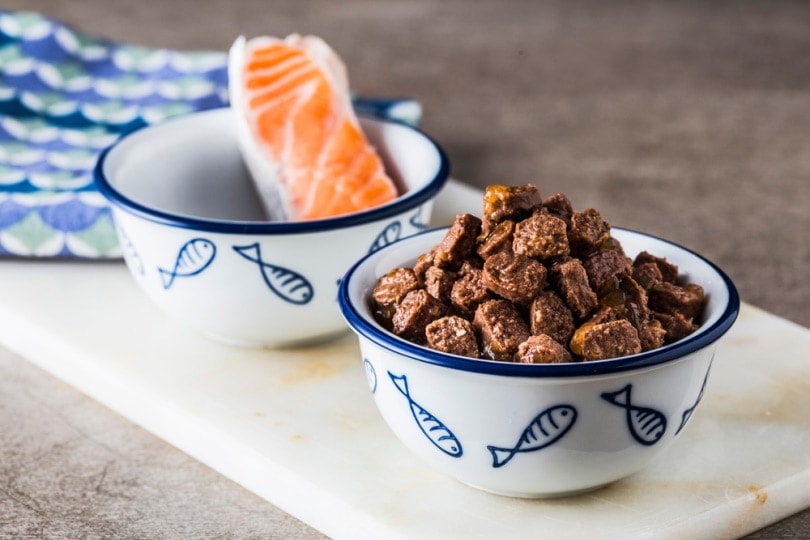
What is ceramic?
Ceramic pottery is a baked clay that becomes very hard when exposed to high temperatures. People may also refer to this material as earthenware, stoneware, or porcelain. Many home dishes use a similar material and many toilets, as well as vases and statues. The hard surface can be very smooth and resistant to scratching, so, like stainless steel, its easy to clean and will not allow bacteria to grow. It will not leak any chemicals into the food, nor will it change the flavor.
The primary downside to ceramics is that its hardness makes it brittle, so its easily broken by handling them roughly or dropping them.
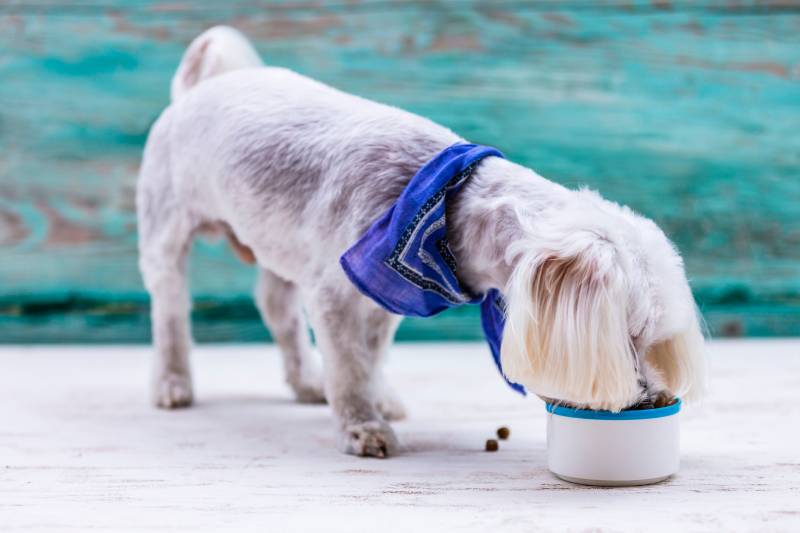
When do I use ceramic?
Ceramic dog bowls make an excellent choice for most homes, and due to their heaviness, they are especially useful for dogs that like to push the food bowl around while they eat. These bowls are often highly decorated, and there are plenty of patterns and colors to choose from, so you are sure to find one that accents your kitchen. There is no worry about rusting, and it will last a lifetime if you dont drop it.
The downside to ceramic is its brittleness, which makes it easy to break or crack. The decorative coating also tends to ship off after repeated washings, decreasing its attractiveness. The decorative colors and patterns can also increase the bowls cost, and its weight can increase the price of shipping it to your home.
Pros
- Hard surface
- Decorative appearance
- Easy to clean
- Reduces sliding
When to Use Stainless Steel
- Main dog bowl
- Secondary dog bowl
- Less expensive
- More durable
When to Use Ceramic
- Main dog bowl
- Secondary dog bowl
- Pets that push the bowl
- More attractive
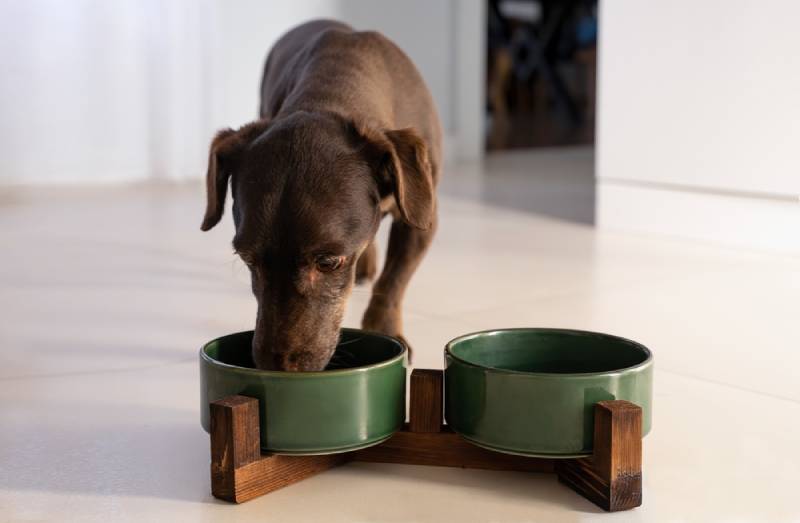

Conclusion
We recommend the stainless steel dog bowl for most people because its easy to clean and nearly indestructible. Its lightweight, inexpensive and suitable for indoor and outdoor use. You are also more likely to find one at your local store that you are a ceramic bowl. Its not that we dont like ceramic bowls. Ceramic is also great, and many people will prefer them, but they require a little more care than you dont handle them roughly, and they are not as easy to find and tend to be more expensive. However, if you have just redesigned your kitchen to be color-coordinated, the ceramic bowl is likely what you need.
We hope you have enjoyed looking over these popular materials to make dog bowls and have decided what type you would like to use. If we have helped your pet have a happier mealtime, please share this look at stainless steel and ceramic dog bowls on Facebook and Twitter.
Ceramic VS. Stainless Steel Pet Bowls
Ceramic VS. Stainless Steel Pet Bowls
Selecting the right feeding bowl for your pet can be a difficult decision with so many different shapes, sizes, and materials to choose from. In this article we will explore the differences between stainless steel and ceramic pet bowls.
Ceramic
When it comes to pet feeding bowls, ceramic bowls are a popular choice. Ceramics are widely available, come in a variety of styles, and can even be customized with your pets name and other designs. While these bowls can be beautifully designed and esthetically pleasing, there are a few reasons why ceramic bowls are not considered the best option when selecting a bowl for your pet.
Ceramic bowls are often finished with a thin layer of paint glaze that protects and seals the underlying bowl. If youre going to purchase a ceramic dog bowl, make sure that they are labeled as "Food Safe" or "Lead Free," this will ensure that your pets bowl is free from lead and other harmful chemicals. Another reason why ceramic bowls are not considered as the safest option for pets is they can easily chip or break if dropped. Ceramics are known to be much heavier than other options and can create shards, chips, and sharp edges if they accidentally slip off a countertop. An additional danger associated with ceramic bowls is the material itself. Ceramics contain microscopic holes and crevices that can harbor bacteria and fungus. Thoroughly washing your ceramic bowls will only do so much as the bowls tiny edges, holes, and micro cracks will still allow for microscopic organisms to flourish.
Stainless Steel
When it comes to selecting a feeding bowl for your dog or cat, stainless steel is hard to beat. Stainless steel can survive exposure to high temperatures, doesnt easily scratch or dent, and will not rust. Complementing its durability, stainless steel bowls are lightweight and will easily survive an accidental drop from a countertop. Besides being extremely durable, stainless steel provides a variety of health benefits.
Unlike ceramic bowls, stainless steel is non-porous and does not contain microscopic cavities, edges, or cracks. The absence of these microscopic imperfections means that there are no places for bacteria and fungus to form. Cleaning stainless steel bowls after use will eliminate any micro-organisms and keep your pets healthy and safe. While stainless steel is the most recommended choice of material for pet bowls, not all forms of stainless steel are created equal. The WeatherTech Pet Feeding Systemfeatures the only pet bowlstested to human food grade standards and are certified by the NSF to be free of lead, radiation, mercury, cadmium and other toxins.

